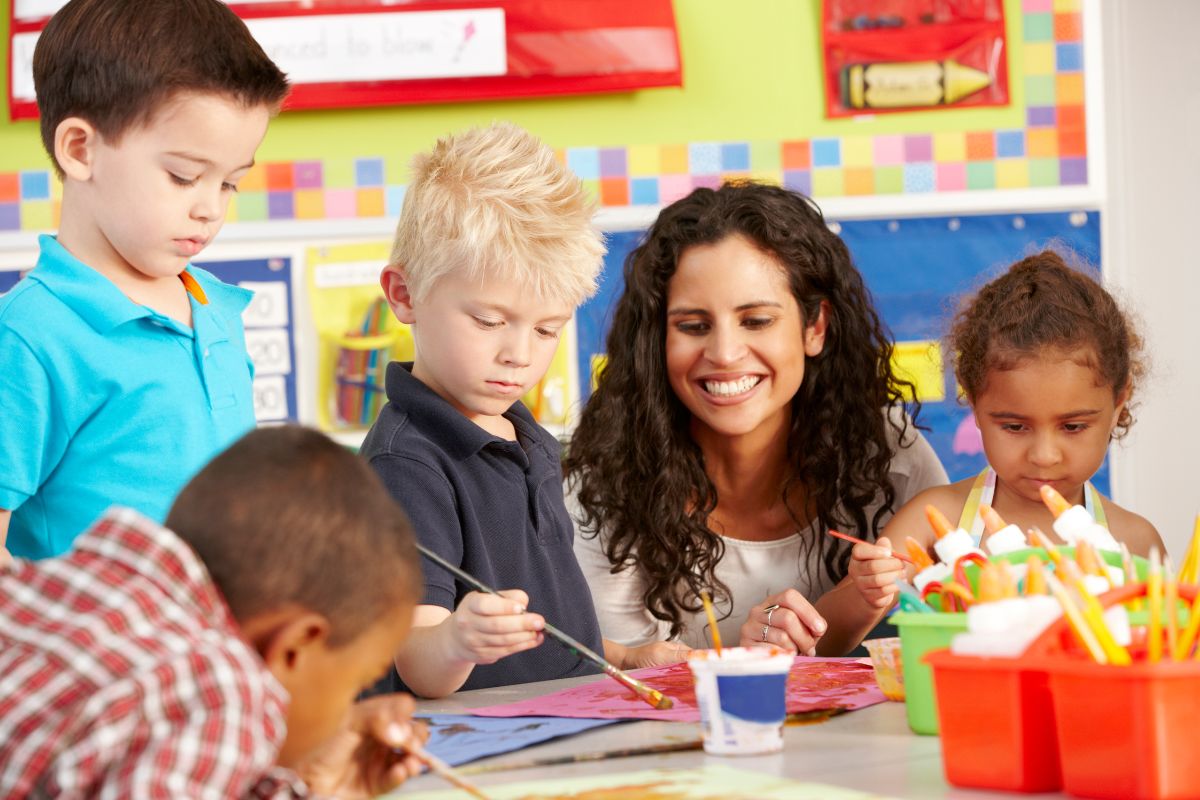

Art lessons are commonly associated with student enrichment, but they also offer numerous benefits for teachers. Engaging in art can enhance teaching skills, promote personal well-being, and foster stronger classroom connections. This article explores the many advantages of art lessons for educators, providing a detailed look at how these creative activities can transform the teaching experience.
Table of Contents
Art lessons can significantly enhance a teacher’s pedagogical techniques. By integrating creative strategies, educators can design more engaging and effective lesson plans. Art lesson for teachers encourages teachers to explore new teaching methodologies, such as project-based learning and interdisciplinary approaches, which can cater to diverse learning styles and needs.
Teachers who engage in art are more likely to incorporate creative elements into their teaching. This creativity can lead to the development of unique and stimulating lesson plans that capture students’ interest. By using artistic methods, teachers can make learning more dynamic and enjoyable, which can improve student retention and understanding.
Art requires problem-solving and critical thinking, skills that are directly transferable to the classroom. Teachers who practice art develop the ability to approach challenges from various angles and find innovative solutions. This skill is invaluable in addressing classroom issues and adapting to the needs of different students.
Teaching is a demanding profession that can lead to high levels of stress and burnout. Art provides a therapeutic outlet for teachers, allowing them to relax and unwind. The process of creating art can be a form of meditation, helping educators manage stress and maintain a healthy work-life balance.
Completing an art project can boost self-confidence and self-esteem. Teachers who engage in art often experience a sense of accomplishment and pride in their work. This increased confidence can positively impact their teaching, making them more assertive and effective in the classroom.
Art encourages mindfulness, the practice of being present and fully engaged in the moment. Teachers who practice mindfulness through art can improve their focus and attention, which can lead to better classroom management and student interactions. Mindfulness can also help teachers manage their emotions and respond more calmly to challenging situations.
Art can help teachers build stronger relationships with their students. By participating in creative activities together, teachers and students can connect on a deeper level. This shared experience fosters a sense of community and trust, which can enhance the overall classroom environment.
Incorporating art into the curriculum can increase student participation and engagement. Creative projects can make learning more interactive and hands-on, encouraging students to take an active role in their education. Teachers who use art to engage students often see improved attendance and academic performance.
Art lessons can promote inclusivity and respect for diversity. Teachers who are knowledgeable about different cultural art forms can incorporate these into their lessons, celebrating the diversity of their students. This practice helps create a more inclusive classroom environment where all students feel valued and respected.
Art can be a gateway to interdisciplinary learning. Teachers who incorporate art into their curriculum can connect it with other subjects, such as history, literature, and science. This approach can make lessons more comprehensive and relevant, helping students see the connections between different fields of study.
Art encourages critical thinking and analysis. Teachers who practice art can develop these skills and apply them to their teaching. By encouraging students to think critically about their creative projects, teachers can help them develop important analytical skills that are valuable across all subjects.
In today’s visually driven world, visual literacy is an essential skill. Teachers who engage in art can enhance their ability to interpret and create visual content. This skill can be applied in the classroom to help students develop their visual literacy, which is crucial for understanding and communicating information in various formats.
Teachers who engage in art are often inspired to pursue continuous improvement and professional development. The creative skills and insights gained from art can motivate educators to seek out new learning opportunities and stay current with educational trends. This commitment to lifelong learning benefits both teachers and their students, fostering a culture of growth and innovation.
Art has the power to reignite a teacher’s passion for their profession. Engaging in creative activities can remind teachers of the joy of learning and the impact they have on their students’ lives. This renewed enthusiasm can make teaching more fulfilling and inspiring, positively affecting both teachers and their students.
Participating in art encourages a growth mindset, the belief that abilities and intelligence can be developed through effort and perseverance. Teachers who embrace a growth mindset are more likely to take on challenges and view failures as opportunities for growth. This attitude can inspire students to adopt a similar mindset, promoting resilience and a love of learning.
The benefits of art lessons for teachers extend far beyond the classroom. By enhancing teaching skills, promoting personal well-being, and fostering stronger connections with students, art can transform the educational experience for both teachers and their students. Embracing art in education not only enriches the lives of teachers but also creates a more dynamic and engaging learning environment.
Sign up to receive our email, delivering the latest stories straight to your inbox.
